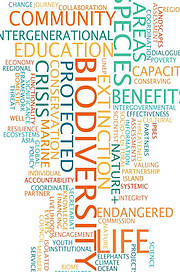Nature+ life - Key messages from the IUCN Congress Forum
12 September 2012 | Article
Conservation of biodiversity has been a cornerstone of IUCN’s work since its founding. Yesterday’s Forum events document the central role this field continues to play:
Conservationists are learning from each other to successfully plan and implement conservation actions
The focus on quantitative evaluation of success and sharing lessons learned through publications, knowledge products, and peer learning networks is enabling successful approaches to be scaled and replicated across the planet. Particular bright spots are emerging from conservation work in island states, which are inspirational for the entire conservation community.
Significant advances are being made in species conservation by using a “one plan” approach that brings together the diverse range of stakeholders involved in conservation planning and management early in the process. This scope of technical expertise, along with coordination of the contributions, is having an impact on species recovery.
Studies are also documenting the successful conservation of biodiversity in well-managed protected areas. While a crucial instrument for conservation, the studies also underscore the importance of managing protected areas for conservation of all species, not only those that are at risk.
IUCN’s Green List Initiative shows promise as a tool that will help countries evaluate the effectiveness of their protected areas and provide a basis for celebrating their conservation achievements.
Biodiversity and livelihoods are intrinsically linked
Biodiversity is mainstreamed across the development agenda. Values and ethics are more commonly shared between governments, the private sector and conservationists, reinforcing shared commitments to conserve biodiversity and ensure that livelihoods and wellbeing are secured. It is broadly understood that healthy biodiversity and resilient ecosystems provide the stability to ensure sustainable development.
Policies recognize the needs of people to access and benefit from the biodiversity that secures the integrity of the ecosystem services on which they depend. Incentives coupled with governance frameworks that ensure accountability are fostering effective stewardship of natural resources.
Partnerships are stimulating action to address biodiversity goals
There are numerous successes in advancing biodiversity conservation through collaborative partnerships where goals and actions are shared. These partnerships are helping to create links between conventions, strategies, conservation needs, and stakeholders to take concerted actions on the ground.
The Global Partnership on Plant Conservation, the Global Island Partnership, the Alliance of Zero Extinction gap analysis, and EBSA’s on marine biodiversity are examples of such partnerships that have had substantial results.
"We don’t have the right to cause extinction of species in the world" Dr. Braulio Dias, Executive Secretary, CBD Secretariat.
Better knowledge is contributing to better conservation and human well-being
The growing scholarship on species biology, status and threats coupled with new technologies is contributing to more effective monitoring and conservation of biodiversity. Innovations and efficiencies from satellite imagery to support census methodologies and the introduction of tools to support ranger-based monitoring are increasing understanding of the species and habitats being protected thus management is more effective at the field level.
Compilation and communication of field data and information on species and habitats is contributing to better policy, better implementation, and greater commitment to conservation of biodiversity. Biodiversity is more widely used in public health and ecosystem health monitoring studies as more and more overlap occurs between wildlife diseases and human infectious diseases. The concept of “One health” is becoming more prominent.





